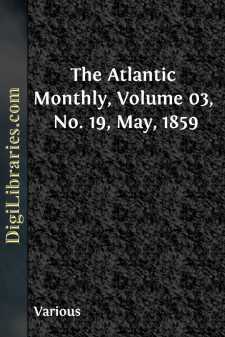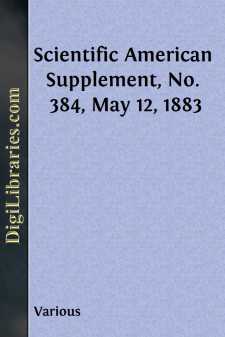Categories
- Antiques & Collectibles 13
- Architecture 36
- Art 48
- Bibles 22
- Biography & Autobiography 813
- Body, Mind & Spirit 141
- Business & Economics 28
- Children's Books 12
- Children's Fiction 9
- Computers 4
- Cooking 94
- Crafts & Hobbies 4
- Drama 346
- Education 46
- Family & Relationships 57
- Fiction 11826
- Games 19
- Gardening 17
- Health & Fitness 34
- History 1377
- House & Home 1
- Humor 147
- Juvenile Fiction 1873
- Juvenile Nonfiction 202
- Language Arts & Disciplines 88
- Law 16
- Literary Collections 686
- Literary Criticism 179
- Mathematics 13
- Medical 41
- Music 40
- Nature 179
- Non-Classifiable 1768
- Performing Arts 7
- Periodicals 1453
- Philosophy 64
- Photography 2
- Poetry 896
- Political Science 203
- Psychology 42
- Reference 154
- Religion 513
- Science 126
- Self-Help 83
- Social Science 81
- Sports & Recreation 34
- Study Aids 3
- Technology & Engineering 59
- Transportation 23
- Travel 463
- True Crime 29
The Mirror of Literature, Amusement, and Instruction Volume 20, No. 567, September 22, 1832
by: Various
Categories:
Description:
Excerpt
Public Buildings of Manchester
PUBLIC BUILDINGS OF MANCHESTER.
The annexed Engravings are important illustrations of the statement in a recent Edinburgh Review:—that Lancashire from being amongst the most backward parts of England, has worked its way into the front rank. They are, however, not only characteristic of the public spirit which animates the whole county; but they are monuments of commercial wealth, active benevolence, and intellectual superiority, of which the Manchesterians have ample cause to be proud. It will be seen from their details, that the structures have been built within the last half century, at an expense of more than one hundred thousand pounds; while their association with the fame and fortunes of men illustrious in science will render the subjoined Engravings of no common interest. The details which follow have been abridged from Lewis's Topographical Dictionary, 4to. 1831.
Is a noble and elegant edifice, erected under the superintendance and from a design of Mr. Francis Goodwin, of London, in the Grecian style, after the temple of Erectheus at Athens, with a beautiful tower and dome in the centre, resembling the tower of Andronicus, called "The Temple of the Winds." The principal entrance is by a magnificent colonnade, with a rich entablature, in front of which are sculptured representations of the town of Manchester, and emblems of trade and commerce. In the wings are niches for statues of Solon and Alfred; in the medallions of the attic are busts in alto relievo of Pythagoras, Lycurgus, Hale, and Locke. The building contains various apartments for conducting the public business of the town: on the principal floor is a splendid room, 132 feet long, 43 ft. 8 in. wide, and 51-1/2 feet in height to the centre of the principal dome. The room is divided into three parts by two ranges of eight elegant Ionic pillars, so disposed that each may form a separate apartment; the central part being lighted by a superb dome, supported on 16 dwarf columns of scagliola marble, corresponding with the exterior design of the tower. The style of the whole room is that of chaste and classic beauty: the light is tastefully introduced into the extreme sections of the great room by concealed skylights, and through stained glass in the panels of the ceiling and the dome, decorated to correspond with those that are not pierced for that purpose. Three staircases lead to this splendid room, with the interior of which the principal staircase is made to harmonize. The foundation-stone of the building was laid August 19, 1822, by James Brierley, Esq. Boroughreeve; and its expense is stated at 40,000l.
THE INFIRMARY
Was established in 1752, by Joseph Bancroft, Esq., in conjunction with Charles White, Esq., M.D.; and in 1755, a building for the purpose was erected by subscription. It has been liberally supported, and since it was first opened for the reception of patients, has afforded medical relief to more than half a million of the labouring class. The buildings, which have been progressively enlarged, and to which other establishments have been attached, contain 180 beds for the accommodation of in-patients, with apartments for the officers and attendants, and a surgery, library of medical books, committee-rooms, and other offices; also a complete set of baths for the use of the patients....












